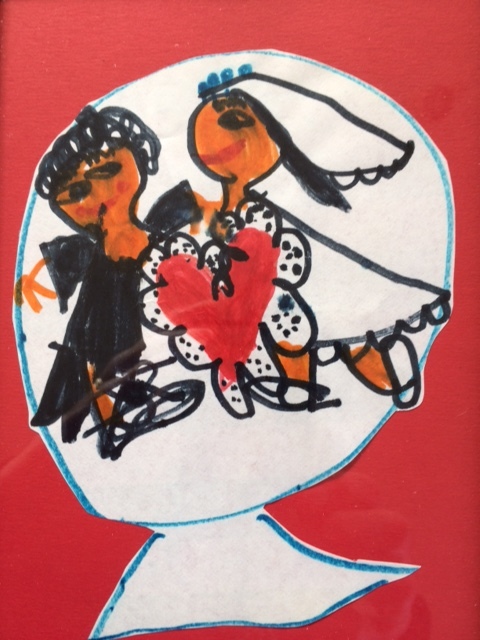For the past few months, my sisters and I have been emptying our parent's house to get it ready for sale. This has been an eye-opening journey, full of emotional pot-holes, happy memories and a lot of hard work for three women of a certain age. Ever on the look-out for textile detritus, I made a discovery in a basement box of rags. Wadded and stuffed into the corner, as if in a time-capsule, were a dozen white cotton dress shirts.
The shirts are from the early 1960s, some even have the date of purchase written on the shirttail with a laundry marker. All of the shirts were also marked with the Union Label, a rare sight today. My father was a high school social studies teacher, and my mother laundered and ironed six white shirts a week for him to wear to school, and church on Sunday. I loved the smell of the fresh laundry, the spray starch and the hot iron. My mom would put up the ironing board and tune in "As the World Turns" on the black and white TV, ironing until her show was over. So many stolen hours spent washing, line-drying, dampening, starching and ironing.
These white shirts are the focus of a new series of quilts in A History of Toil, all about laundry. I have done plenty of laundry myself, so I have a lot of imagery to draw from. Coin Op Laundry, the first in the series, was selected for the upcoming exhibit of Artist as Quiltmaker, at the Firelands Association for the Arts, in Oberlin, Ohio, May 12 through July 29, 2018.
Coin Op Laundry, 44" x 41", cotton, linen, found white dress shirts painted and dyed, hand embroidered and stitched
I will write more about some of the textile processes I have used in these works as I go along. The white cotton has been a blank canvas for all kinds of interesting exploration of surface design.
Spring Reading
Here are some of the titles I have read the past few weeks: Happiness, by Aminatta Forna; An American Marriage, by Tayari Jones; Alternate Side, by Anna Quindlen; The Flight of the Sparrow, by Amy Belding Brown; and Varina, by Charles Frazier.


















